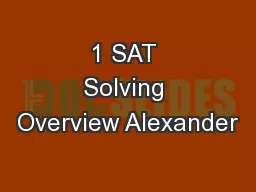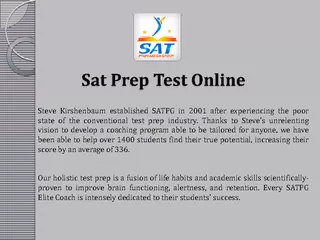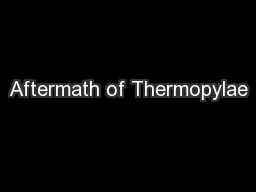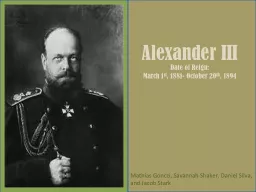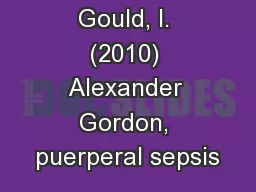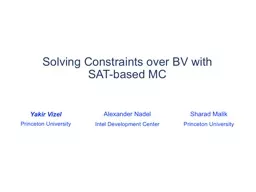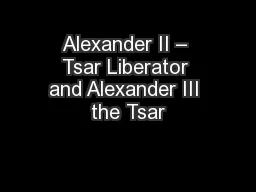PPT-1 SAT Solving Overview Alexander
Author : test | Published Date : 2018-11-05
Nadel February 2017 Agenda Introduction Early Days of SAT Solving Core SAT Solving Conflict Analysis and Learning Boolean Constraint Propagation Decision Heuristics
Presentation Embed Code
Download Presentation
Download Presentation The PPT/PDF document "1 SAT Solving Overview Alexander" is the property of its rightful owner. Permission is granted to download and print the materials on this website for personal, non-commercial use only, and to display it on your personal computer provided you do not modify the materials and that you retain all copyright notices contained in the materials. By downloading content from our website, you accept the terms of this agreement.
1 SAT Solving Overview Alexander: Transcript
Download Rules Of Document
"1 SAT Solving Overview Alexander"The content belongs to its owner. You may download and print it for personal use, without modification, and keep all copyright notices. By downloading, you agree to these terms.
Related Documents

